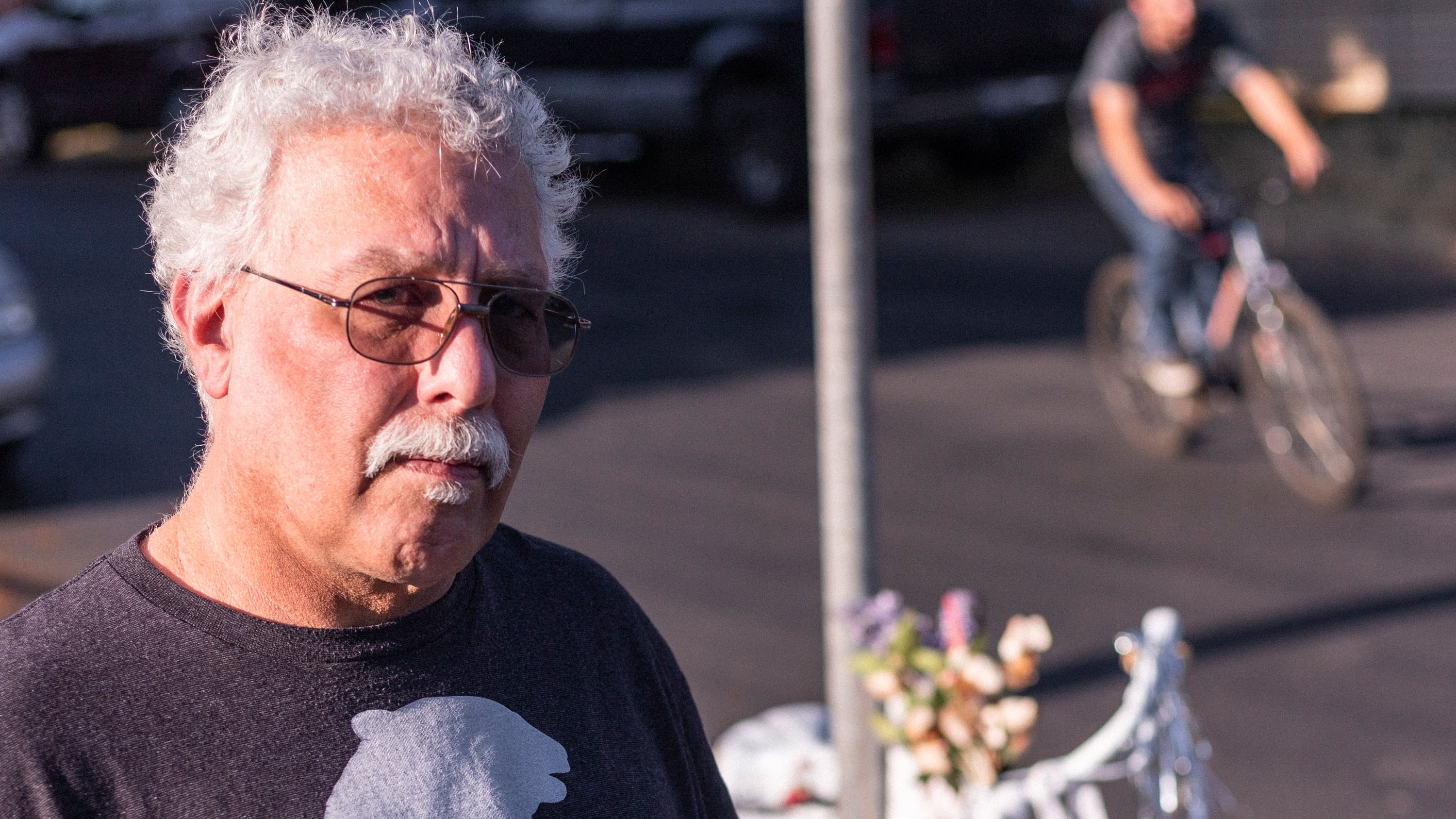Friends and family of Louanna Battams still don't know why she was walking across Southeast Foster Road the night she died.
The 82-year-year old woman rarely left home in the evenings. "I was just bewildered," says Battams' close friend Phyllis Shelton. "We have no idea what she was after or where she was going."
But at 8:42 pm on June 13, Battams was struck by a car at the intersection of Southeast Foster and 71st Avenue. The driver stayed at the scene and wasn't charged with a crime.
Battams' death was especially resonant because it occurred just two blocks east of freshly painted crosswalks and newly installed flashing lights—improvements that city officials had celebrated earlier the same day.
She was the 26th person to die in Portland traffic this year. She wouldn't be the last.
A little over a month later, on July 25, the city reached a grim milestone: 34 traffic deaths, the same number as all of last year.
In some ways, 2018 was an anomaly—traffic deaths were lower than they had been since 2014. This year marks a return to the typical Portland pattern. But that's a setback for city officials who have publicly pledged to eliminate traffic deaths by 2025.
They've spent over $47 million on safety improvements in the past two years at "high crash" intersections and roads. Portland Bureau of Transportation officials guess they will spend $60 million more in 2019.
But Battams' death—on the street where PBOT spent $9 million on safety—displays the difficulty of the task the city has set for itself. It must not only improve the protections its roads offer to the most vulnerable users, but it must find a way to account for the human error, irresponsibility and intoxication of drivers behind the wheel.
"It feels like we've taken one step forward and two steps back," says City Commissioner Chloe Eudaly, who oversees PBOT. "Despite historic investments and miles of improved roadway, despite reducing speeds throughout the city, despite outreach and education campaigns, we have seen an increase in fatalities and serious injury this year."
Eudaly blames a "century of prioritizing speed over safety and drivers over all other road users."
PBOT spokesman John Brady says lowering speed limits or installing flashing beacons at crosswalks doesn't immediately change driver behavior. He says the city typically sees a lag of three to six months before drivers get the message.
"It's not like you put something in and overnight the road or the intersection will necessarily be safer because users have to adjust their behavior," Brady says.
The absence of obvious solutions or scapegoats only adds to the frustration of people who lost loved ones in traffic. In the days after Portland matched its 2018 death toll, WW spoke to family and friends of three people killed in this year's crashes.

Lance Hart
June 23
Southeast Flavel Street and 78th Avenue
Hart planned to spend his final evening picking up cans and bottles from curbside recycling bins. It was something the 32-year-old landscaper did often to supplement his income.
He made his rounds of can collecting via bicycle, his roommate recalls. He was riding that bike when he was struck by a car.
Tom Meyer, Hart's roommate and best friend of seven years, says he first met Hart at Safeway. "He was a homeless person who didn't look too good, and I offered help," says 62-year-old Meyer.
Meyer remembers Hart always being excited about trying new things—Frisbee, beach camping, crab boils.
They called each other family.
Hart died four blocks west of safety improvements the Oregon Department of Transportation had completed along Southeast 82nd Avenue, including signal updates and curb ramps.
This spring, the city pledged to shift its road improvement priorities to east of 82nd, where more than 70 percent of 2018's crashes took place. PBOT spokesman Brady says most of the traffic crashes that happen in East Portland are due to higher speed limits, fewer traffic signals and wider roads.
At the intersection where Hart died, mourners placed a white bicycle—a "ghost bike"—and adorned it with flowers. Before the ride started, Meyer says he strapped Hart's graffitied skateboard to his back. The strap broke at the site of the crash. Meyer left the skateboard there.
"He kinda took over the last seven years of my life," says Meyer. "So I'm kinda without anyone to do that with now."

Louanna Battams
June 13
Southeast Foster Road and 71st Avenue
Frank Battams says his mother saved his life.
It was March 1990, and Battams, then 30, was struggling with alcoholism. He wanted to move back home. Louanna Battams told him no.
"She said that she couldn't help me, and that I had to figure this one out," Frank says. "And that saved my life."
Louanna, known to her friends as Lou, raised Frank and his younger brother Kenny alone, while earning a degree in earth sciences and working as a geologist.
Later in life, she took up pottery and drawing, and after her death, Frank unearthed a box of drawings she'd never shared. His favorite was a simple pencil sketch of a sleeping cat from 1999 titled "Tired Cat."
Her stubbornness was legendary in her neighborhood, Mount Scott-Arleta. Lou's former neighbor and good friend of 24 years, Phyllis Shelton, says she "wouldn't suffer fools" at neighborhood association meetings.
"She wasn't going to sit around and let people do stupid things," says Shelton.
Battams was the 11th pedestrian in Portland to be hit and killed this year.
Brady says data shows one clear trend in traffic deaths: "Pedestrians are the most vulnerable users of our streets and sidewalks."
Battams would return to his mother's house every other Saturday for a ritual: He made her coffee and a grilled cheese sandwich, using Dave's Killer Bread, extra sharp Tillamook cheddar cheese, and—as was her custom—real butter.

Heaven Leigh Mathews
March 9
Southeast Division Street and 122nd Avenue
Five years ago, a drunken driver killed Mathews' best friend. Her half-sister and her ex-boyfriend remember Mathews telling them she never wanted anyone to be locked away from their family—including the driver who had killed her friend.
This March, 19-year-old Mathews was riding in the passenger's seat of a stolen vehicle driven by a man on meth when they crashed into a steel pole. The man was fleeing police.
Mathews was pronounced dead at the scene. The driver, 26-year-old Adam Valle, survived and was charged with manslaughter. He awaits trial.
Her older half-sister, 30-year-old Amandalynn Saryon, says she and Mathews were incredibly close. "Both of our parents were addicts. We really grew up in a family of chaos and addiction," Saryon says. "Everything our parents went through, we wanted to make sure we didn't go through that."
Three hundred people attended Mathews' memorial service—standing room only. "She was absolutely wonderful," Saryon says. "Even if you met her for a brief second, I promise you would never forget her."
Southeast 122nd Avenue ranks among the city's most dangerous streets, but no safety improvements would have changed what happened to Mathews. The city is increasing its DUII patrols, after WW reported last year it had scaled back enforcement of drunken-driving laws. But it's not clear that would have made a difference either: Valle was allegedly speeding to evade the cops.
"She would have forgiven him," says Saryon. "Absolutely."
WW interns Ryan Nguyen and Hannah Chinn contributed reporting to this story.

